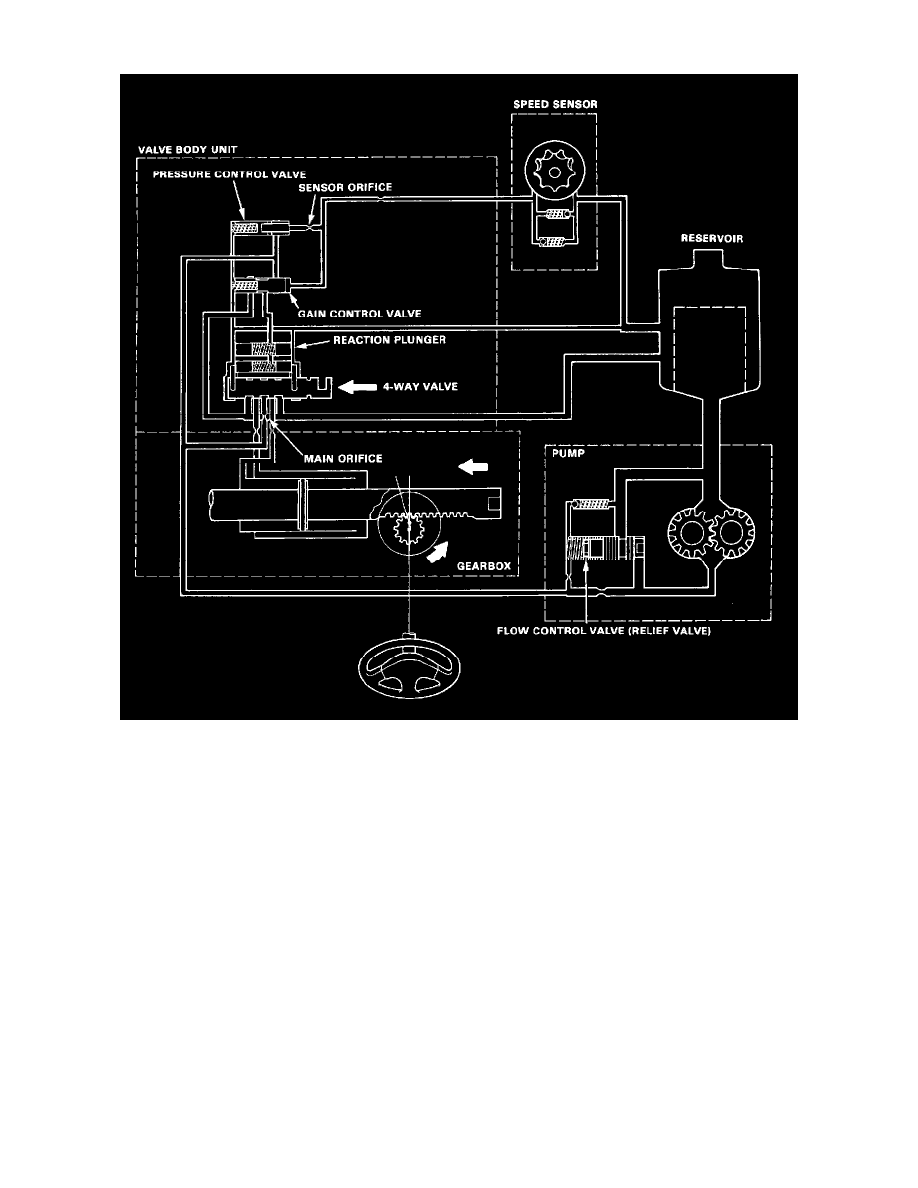Accord L4-2156cc 2.2L SOHC (1991)

Power Steering Fluid: Diagrams
The reservoir supplies power steering fluid to the pump; the pump pressurizes the fluid to about 8000 kPa (1200 psi), and delivers it through a high
pressure hose to the control unit on the gearbox.
The control valve (in the control unit) controls the direction of the turn by shifting fluid to the left or right side of the piston on the rack (in the power
cylinder).
The gain control valve, in the control unit controls the amount of the assist by regulating the stroke of the control valve. The operation of the gain control
valve is effected by the fluid pressure. which is regulated by the pressure control valve, sensor orifice and speed sensor.
The constant pressure is generated by the pressure control valve. This pressure is used as a reference pressure for the response to the car speed. By
introducing this pressure to the speed sensor through the sensor orifice, the pressure downstream of the orifice is changed according to the speed of car.
This pressure is then used to operate the gain control valve.
Two orifices are provided around the circumference of the gain control valve. These orifices provide the stepless reduction of the pressure from the
pump according to the changes in the car speed. The reduced pressure is then sent to the reaction chambers. Therefore the assist varies by regulating the
fluid pressure in the control unit according to the speed of car.
Fluid returning from the power cylinder flows back through the control valve and out to the reservoir through the cooler.
